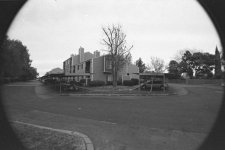Joseph Bautsch
New member
Interesting terminology used by Nikon as a lens designation. (Horse people know what it is.) If you thought the "G" designation, as in Gelded, on a Nikon lens was a feature of some type you would be wrong. It means something has been removed, as what they do with horses, well not exactly that, but none the less something has been removed, not added. It's the aperture ring. The newest lenses from Nikon no longer have the aperture ring, it's not really needed anymore. All the AF/AE camera bodies set the aperture electronically (internally), even in manual mode, making the aperture ring on lenses useless. So as a cost saving move Nikon has removed it. The "G" works fine on all AF/AE cameras however if you have an older manual focus body then the G lens is useless. A G lens is also a D lens which means the electronics in the body can read and record in the EXIF data the lens focusing distance.

